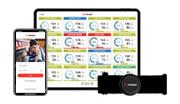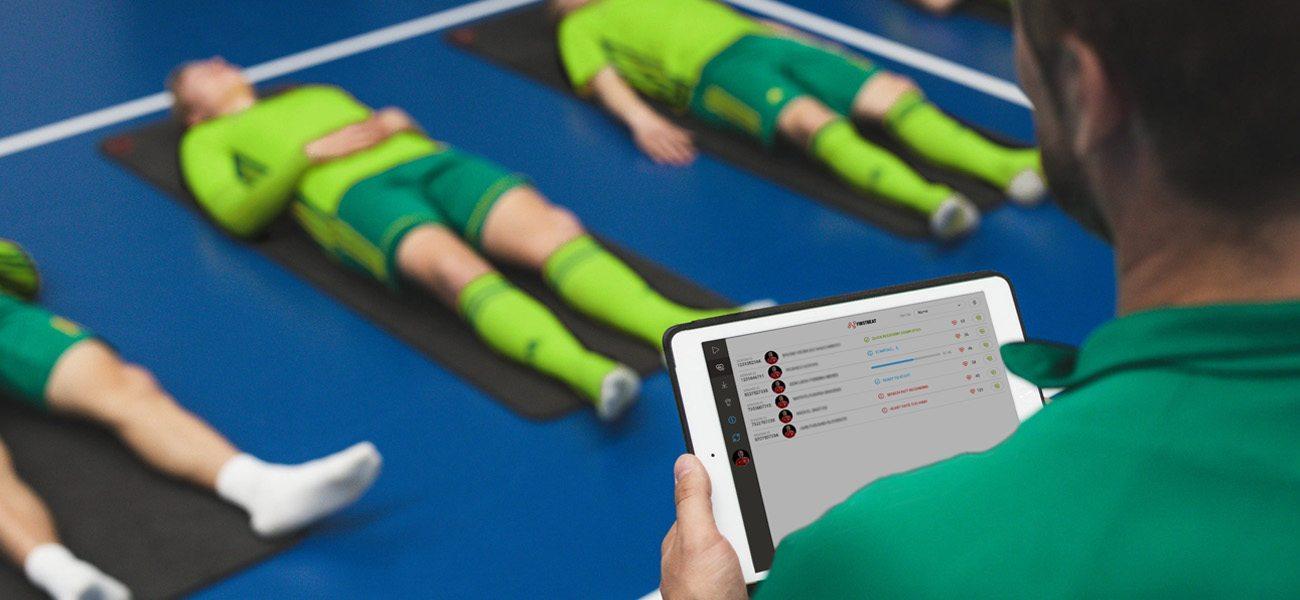
In autumn the new season has just started or is about to start for many teams. The tight game rhythm over the next nine months presents huge challenges for teams and players to maintain optimal performance for the duration of the season. In soccer, the players can play up to 60+ games in a season when you consider league matches, cups and national duties – and it’s even more in ice hockey (e.g. the NHL) where each team plays 82 games before the play-offs have even started.
With such demanding loads placed on athletes due to games, training and travelling, coaches face a real challenge to keep recovery and performance levels high across the entire season. For instance, Firstbeat Sports’ Stress and Recovery chart for an NHL player the day after a game often highlights the demands facing these athletes.
Interested in how stress and recovery data can inform travel and training periodization? Read more in our guide
We recently asked NHL strength and conditioning coaches exactly how do you find the balance during the season. And we got some interesting responses. Reg Grant (New York Rangers at time of publishing) replied, half-laughing, “There is no balance in the NHL”. Meanwhile, Mike Potenza (San Jose Sharks), simply said, “I work in TRIAGE” – aka, the process of determining the priority of patients’ treatments based on the severity of their condition.
Despite their answers, these coaches are among those doing pretty incredible stuff when it comes to fine-tuning player loads by cataloging drills within a training session when preparing for games. They both utilize Firstbeat Sports advanced performance analytics in this process.
Inadequate recovery will lead to performance decrements, whilst increasing the risk of overtraining and injuries. Scientific studies (2) have reported clear performance decrements during the season (sprint times, vertical jump, muscle mass, strength, testosterone/cortisol ratio, VO2max, etc.). Research has also shown that, in soccer specifically, players average two-five injuries in a season and returning from injury takes approximately 10-20 days (3, 4). Within a team this means not only a decrease in performance, it also has a major impact on economic losses.
It’s clear that some (traumatic) injuries can’t be avoided, but constant recovery monitoring followed by early changes in training and recovery protocols will help the team to maintain higher performance levels throughout the season and reduce the risk of injuries.
Tips for Monitoring Recovery
- Start recovery monitoring now! Building the individual baselines before the season starts, when players are fresh, makes it much easier to track the recovery trends across the season.
- Perform recovery tests on a regular basis to identify recovery trends. When using Firstbeat’s Overnight Recovery Test the recommendation is at least one recording/player/week while with the Quick Recovery Test the minimum recommendation is 3 tests/week for each player.
- Make sure the player reaches a high score (>70% of maximum recovery) every two weeks to avoid accumulating fatigue.
- Actions: If recovery is not picking up as it should, lower the training load on an individualized basis and make sure the recovery enhancing procedures are optimized. This means during the player’s leisure time activities, too, not just after training. Small changes to routine beyond practice can make a big impact on overall recovery.
Interested in learning how Firstbeat’s Quick Recovery Test is applied in soccer? Listen to the Firstbeat Sports Podcast
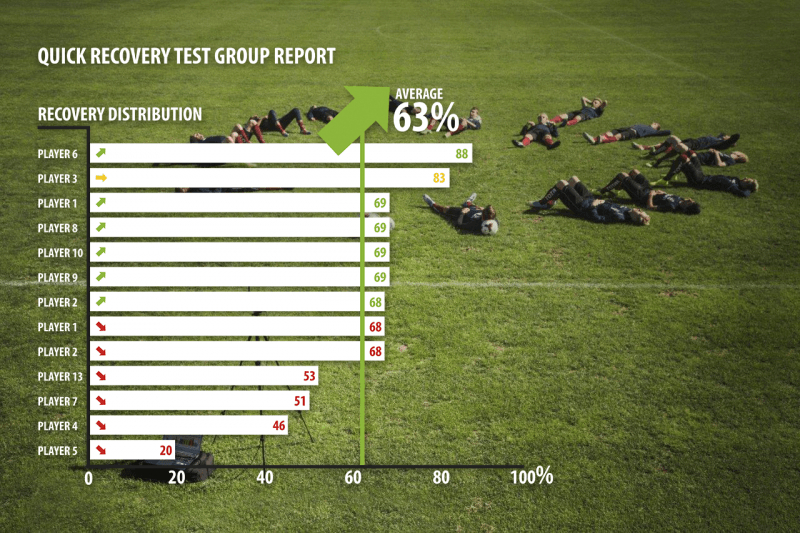
The use of the Firstbeat Bodyguard sensor allows 24-hour measurements of stress and recovery to detect how other factors beyond training are affecting recovery. The Overnight Recovery Test is considered the most accurate method for monitoring recovery.
If you liked this article, you should subscribe to our newsletter.
References:
- Remodeling coaching in the NHL with evidence based data John Lally, Pivot Sports:. Firstbeat seminar, London 19 March 2013.
- Changes in exercise performance and hormonal concentrations over a big ten soccer season in starters and nonstarters. Kraemer WJ, French DN, Paxton NJ, Häkkinen K, Volek JS, Sebastianelli WJ, Putukian M, Newton RU, Rubin MR, Gómez AL, et al. J Strength Cond Res. 2004 Feb; 18(1):121-8.
- Injury incidence and injury patterns in professional football – the UEFA injury study. Jan Ekstrand, Martin Hägglund and Markus Waldén, , British journal of sports medicine, 060582.
- The epidemiology of injuries in a professional soccer team in Argentina Gallo, Pablo Ortega & alI.. Int. SportMed J.2006: 7(4): 255-265.
You might also be interested in
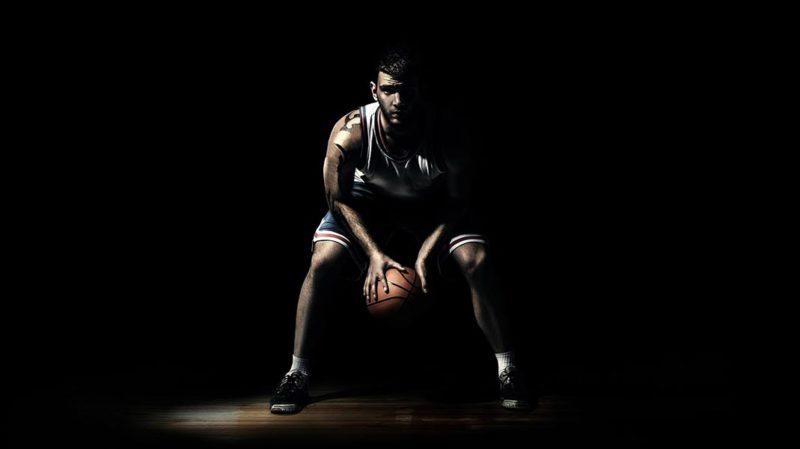
NCAA Basketball: The Practical Side of Recovery Monitoring
As part of the Firstbeat Sports webinar series, Sean Conaty of the University of Eastern Michigan delivered his insights into the practical side of using data to enhance performance for NCAA men’s basketball players.
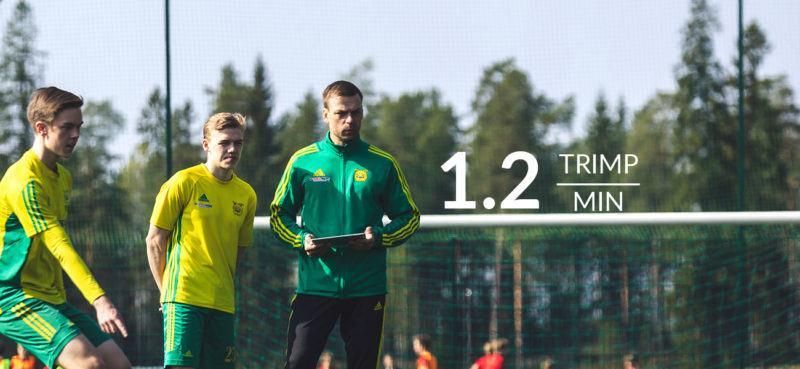
Real-time TRIMP/min: How to Use the Firstbeat Sports App Feature in Training
From replicating game intensity to aiding player rehab, monitoring TRIMP/min has wide-ranging benefits.

Lap Management Tool: Empowering Learning From Physiological Analytics
Isolate and analyze specific session or game moments using Firstbeat Sports’ Lap Management tool.

